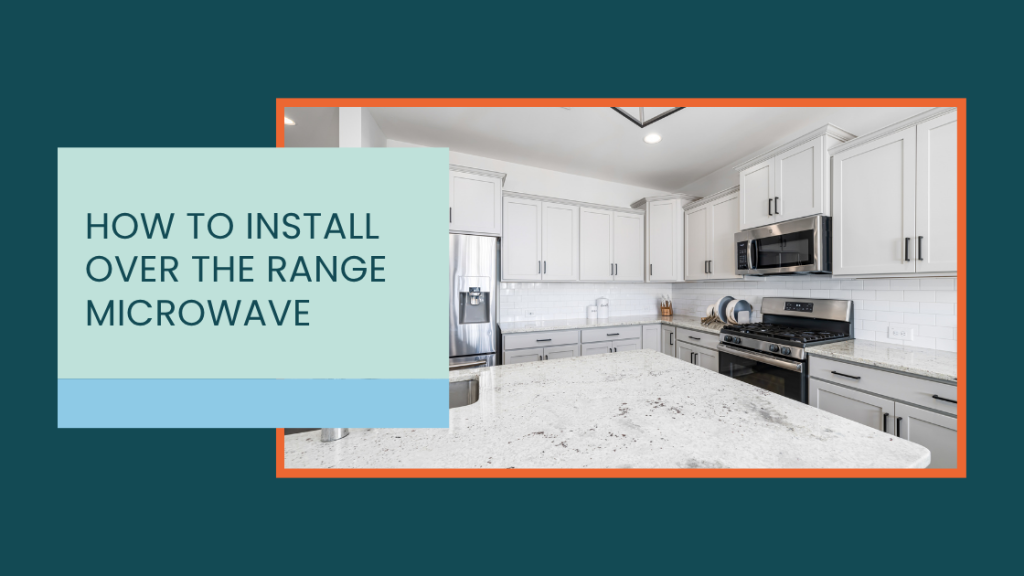Getting an over-the-range microwave can completely change how your kitchen looks and works. It saves counter space, keeps your cooking area organized, and adds that modern, built-in vibe. But before you get started, it’s worth knowing how the process works and what tools, prep, and costs are involved. If you’d rather skip the hassle and get professional help, you can always check out Microwave Installation Service to get the job done safely and efficiently.
Understanding the Basics
An over-the-range microwave isn’t just a simple plug-and-play appliance. It’s mounted above your stove or oven and often connects to a venting system that removes steam and odors while cooking. Because of that, installing microwave over oven setups usually involves both electrical and structural work.
While it’s totally possible to install one yourself, it takes careful measuring, drilling, and wiring. If your kitchen doesn’t already have a vent or outlet in the right place, you’ll need to add those first or get a technician to handle it for you.
Step 1: Measure the Space
Start by measuring the width and height of the space above your range. Most microwaves are designed to fit a 30-inch width, which matches standard stove sizes, but always double-check. You’ll also need at least 30 inches of clearance from the top of your stove to the bottom of the cabinet where the microwave will sit.
Make sure there’s enough depth for the unit, too. If your cabinets stick out farther than usual, the microwave might need a mounting kit or spacer to sit flush. Precise measuring is one of the most overlooked steps in DIY installs, but it’s also what prevents headaches later.
Step 2: Gather the Right Tools
You’ll need a drill, measuring tape, screwdriver, stud finder, level, and a pencil for marking holes. Most microwaves come with their own mounting template and hardware. If you’re replacing an old unit, inspect the existing mounting bracket—sometimes you can reuse it, but in many cases, new microwaves need their specific bracket for safety reasons.
If the instructions look confusing or the mounting bracket doesn’t line up, don’t force it. This is where many people accidentally strip screws or crack tiles. Calling in a Microwave Installation Service can be cheaper in the long run than repairing a broken wall or buying new hardware.
Step 3: Find the Wall Studs
Studs are the solid wooden beams inside your wall that provide support. You’ll need to screw the mounting bracket into at least one stud to hold the weight of the microwave securely. Use a stud finder to locate them. Mark the positions clearly so you can drill accurately later.
If you can’t line up your mounting bracket with a stud, use heavy-duty toggle bolts that are rated for at least twice the weight of your microwave. This is essential for safety microwaves are heavy, and a weak mount can cause it to fall over time.
Step 4: Install the Mounting Bracket
Use the provided template to mark where the screws will go. Double-check your measurements, then drill pilot holes for the screws. Once you’ve confirmed everything lines up, attach the bracket to the wall using sturdy screws. Make sure it’s perfectly level; an uneven bracket means your microwave won’t sit correctly later.
If your setup includes a vent that connects through the wall or cabinet, now’s the time to cut or adjust those openings. Carefully follow the manufacturer’s guide for vent placement. Some models allow recirculating vents, which use filters instead of outdoor ducts, so check your microwave’s configuration before cutting anything.
Step 5: Prepare Electrical Connections
Before doing anything electrical, unplug everything and turn off the circuit breaker for safety. Check if your outlet is inside the cabinet above the stove. If not, you’ll need an electrician to install one. Never use extension cords for microwaves: they draw a lot of power and can overheat the cord, creating a fire hazard.
If your old microwave was hardwired, make sure the new one matches that setup. Many modern models simply plug into a three-prong outlet. Getting this right is crucial not only for safety but also to avoid voiding the warranty.
Step 6: Mount the Microwave
With a helper’s support, lift the microwave and tilt it so the back hooks onto the lower bracket. Then, carefully push it against the wall until it’s snug. From the cabinet above, insert the top bolts through the holes and tighten them into the microwave’s frame. This step usually takes two people: one to hold the appliance in place, and one to secure the bolts.
Once it’s mounted, double-check that it’s level, both side to side and front to back. If it tilts forward, adjust the screws before running the first test.
Step 7: Test the Vent and Power
Plug it in and turn on the vent fan. You should feel air either flowing outside (if ducted) or circulating back through filters (if recirculating). Run the microwave briefly with a cup of water to test if it heats properly. If it trips the breaker or makes a humming noise, unplug it immediately and inspect the connections.
If everything works as expected, clean up any dust from drilling, wipe down the microwave, and you’re done.
Cost Considerations
The microwave installation fee varies depending on where you live and the complexity of the job. On average, it can range between $100 and $300 for basic setups. If you need additional work like cutting a vent hole, installing an outlet, or removing an old microwave, the price can increase.
Some professional installers also include haul-away service for your old unit, which can save you the trouble of figuring out disposal. Hiring a pro might seem like an extra cost, but it guarantees safety and prevents damage that can end up costing more to fix.
Common Mistakes to Avoid
One of the biggest mistakes homeowners make is mounting the microwave too close to the cooktop. Heat from the stove can damage the underside of the microwave over time. Always follow the manufacturer’s clearance recommendation, which is usually at least 30 inches above the range.
Another common error is using weak anchors instead of studs. Drywall alone cannot hold a microwave, especially when it vibrates during use. Always secure at least one side into a stud or use rated toggle bolts.
Finally, don’t forget ventilation. Without proper airflow, the microwave’s motor and filters can overheat and wear out faster.
Final Thoughts
Installing an over-the-range microwave takes patience and the right tools, but the result is a cleaner, more functional kitchen. Measuring correctly, securing the mount, and testing the vent all make a difference in performance and safety.If you want to skip the heavy lifting and make sure everything’s done perfectly, book a Microwave Installation Service. Professionals can handle everything from removing your old unit to wiring and mounting the new one. That way, all you have to do is press start and enjoy your upgraded kitchen setup.



